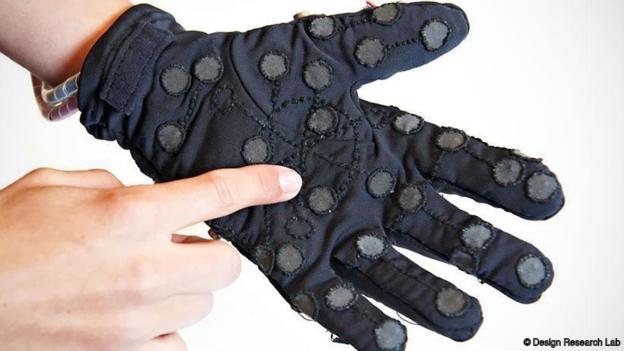Blind-deaf people are often forced to live in a small and isolated world. But can a new glove open the way for easier communication? Lesley Ogden Evans reports.
It’s good to keep in touch – something that Edi Haug and Laura Schwengber know only too well. The pair have been friends since childhood. Within the first year of their friendship, nerve damage inflicted by an inherited genetic condition robbed Haug of his sight and hearing. He was nine. But children are natural innovators. “We started to invent languages and forms of communication just because we were kids and we wanted to play,” says Schwengber. “It was annoying that he couldn’t hear me, and I couldn’t write something down,” she says. So the two invented their own tactile language.
As Haug and Schwengber grew older, they replaced their private language with one that is more widely understood: Lorm, a tactile alphabet spelled out with strokes to the hand. It was invented in the nineteenth century by Hieronymus Lorm – an anonymous pseudonym, for Austrian-born poet, journalist, and novelist Heinrich Landesmann – and is still used today by the deaf-blind community in German-speaking countries.
Source: BBC – Future – The glove that transmits ‘touch’ over the internet



